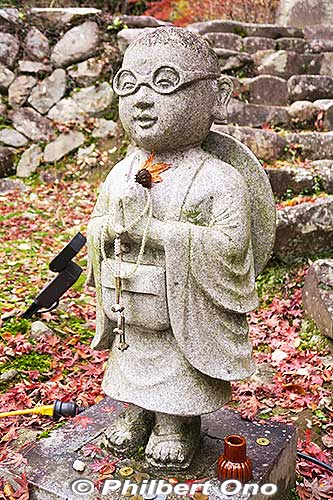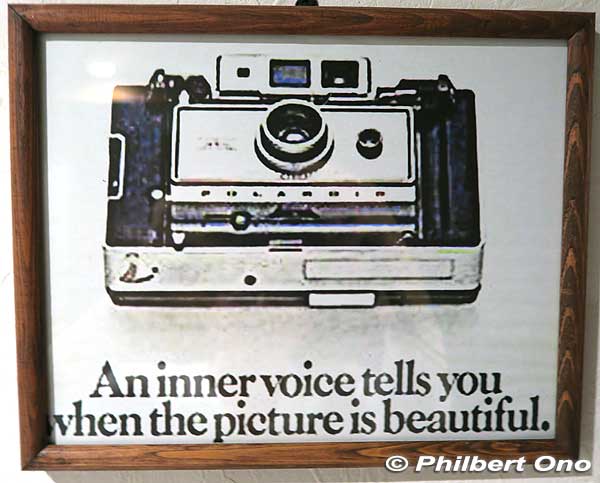
Welcome to PHOTOGUIDE.JP, an online repository of 65,000+ photos, videos, and articles by me, Philbert Ono (Phil Ono). See PHOTOGUIDE.JP’s top page to easily navigate this website.
PHOTOGUIDE.JP basically has four sections:
- Photos is the main section with an ever-growing collection of photos from all 47 prefectures of Japan. The images are organized by prefecture, municipality, and subject. Some images are also organized according to theme. Most images are available for licensing (contact us).
- Articles are full-length articles related to Japan.
- Blog (which you are reading now) has shorter articles about Japan.
- Videos (YouTube) (username: photojpn) centers on Japanese festivals/matsuri.
My favorite subjects to shoot are traditional Japanese things like festivals (matsuri), castles, temples (especially National Treasures), women in kimono, sumo, cherry blossoms, etc. But I also shoot many other things in Japan. I specialize in Tokyo (where I live) and the Kyoto area.
My main motivation behind all of this is that, I want to explore and better understand Japan and share what I’ve seen and learned. I want more people from overseas to visit Japan because that’s the first step to understand Japan better. Japan is much more than just Tokyo, Kyoto, and Mt. Fuji.
Some resources on this site are also shared with my sister site called PhotoGuide Japan (photojpn.org) which introduces Japanese photography.
About Me
Based in Tokyo, I’m an American citizen of Japanese ancestry born and raised in Hawaii, USA. I now live and work in Tokyo, Japan. I am quite fluent in Japanese reading, writing, and speaking.
For more current travel photos of Japan, you can also follow my public posts at https://www.facebook.com/philbertono .
Enjoy!
Philbert Ono
Tokyo, Japan
FAQ
Q1: Any advice on how to take nice pictures?
I really don’t have any advice because the definition of a “nice picture” can be different to different people. Everyone has different preferences, objectives, and tastes. Other than the technical aspects, there are really no rules or formula for taking a nice picture. A blurry or grainy photo considered to be bad to one person might look artistic to another.
If the photo looks good to you, then that’s really all that matters. It doesn’t really matter what other people think unless you’re entering a photo contest. As long as you like the picture, then it’s a nice picture.

If you’re a beginner, take many photos of your favorite subject or theme. Then go home and pick out your favorite shots. Sooner or later, you will understand or recognize what makes a picture look nice or what types of shots you like. Studying common rules and theories about composition might help, but it really depends on your objectives and preferences.
The thing about photography is that, not every photo you take will be a masterpiece. Out of 200 shots, you may find only a few that you really like. So the trick is to shoot a lot, then you can yield a higher number of great shots. That’s the great thing about digital. You can afford to take a lot of photos and just delete the bad shots.
Also think of ways to increase your chances of taking nice pictures. In my case, I like to shoot on sunny days because it brings out vivid colors, so I try to shoot on sunny days when possible. If it’s a festival, I check the exact route, location, time, and what the highlights will be. Such detailed information is usually only in Japanese. The shooting location is also important. I may need to go early to secure a prime spot for shooting.
When I’m shooting, my greatest enemy (besides foul weather) is another photographer. Photography is such a popular hobby that there will always be photographers who get in my way or spoil my clear shot. Once upon a time, amateur photographers in Japan were mostly old, retired men. Now we also often see little old women carrying one or two big D-SLR cameras at festivals. They can get quite aggressive and ill-mannered at times. And of course, most everyone has a smartphone or iPad to take pictures with while holding it above their heads.
Most of the photos I put online are presented in a series, usually in an online album (photo set). They are arranged in a logical sequence to tell a story or to document a place or event. This sequence is often chronological, especially for festivals.
I’m inclined to take pictures that serve a practical purpose. My travel photos help people understand what a place or event looks like. People can thereby make travel decisions. I know many photographers look at my photos to see what’s there to photograph. I also caption my photos whenever I can, so you can better understand the subject or scene. Many photographers think that the picture speaks for itself and don’t need captions. I disagree. A caption enhances the picture’s impact and the viewer’s understanding.
Q2: How do you organize and store your photos?
When you take as many photos as I do, having an easy and efficient way to organize, store, and find photos and videos becomes absolutely essential. My images are basically organized by date. First of all, the image file names contain the date with the year, month, and day (YYYYMMDD) it was taken. Then there’s a hyphen or underbar followed by a sequential number. For example, “20201011-1234.jpg”. I may also include keywords in the file name. For each event (festival, etc.) or subject, I create a separate folder for the images I shoot. The folder is also named with the date and a descriptive title. For example, “20201011-SportsDay”. These folders are then stored in a folder organized by month, named like “202010-PHOTOS” for photos taken in Oct. 2018. These month folders are then stored in a folder for the year named like “2020PHOTOS”. When I need to find a particular image, I search for the date or key words with my computer’s search function. The Japanese date format (YYYYMMDD) is much more efficient than any other date format.
I don’t use photo organizer applications like Apple’s Photos app (for amateurs and the worst there is), Adobe Lightroom, etc. They lock you into their system and make it difficult or impossible to switch to another system. Such applications can also be discontinued at the maker’s whim (like iPhotos and Aperture). After organizing my photos as above, I use Adobe Bridge for browsing through the photos and rating them or renaming them.
My images are stored locally on external hard drives. All my files are stored redundantly in different locations in Japan. So even if a disaster destroys my home, I still have the files stored elsewhere. I don’t use cloud services to store images because I have too many images to store and it takes too long to upload/download.
Q3: What are your ideas or concepts behind your videos?
Video has come a very long way since I first started shooting video. Video technologies, video quality, and video infrastructure (YouTube, editing software, etc.) have evolved and developed dramatically since the early 2000s. And it’s still ongoing with 4K and maybe 8K. So naturally, my videos have evolved accordingly in both content and quality. In the beginning, videos had to be short, no longer than 5 or 10 min. But YouTube gradually extended this limit until I could actually have videos longer than 2 hours on YouTube.
Unlike still photos, video can record movement and sound. And so my videos center on subjects that move and make sounds. I don’t shoot videos of temples and shrines because they don’t really move nor make any sound. That’s why most of my videos show festivals, the perfect subject for videos and one of my favorite subjects.
My festival videos try to make you feel like you’re there watching it. I shoot mostly from the same angle of view as the crowd watching the festival. I avoid making “foreigner discovers Japan” type of videos.
I don’t ever appear in my videos, photos, and websites. It’s because I prefer not to distract you from the subject at hand. I want all eyes on what I’m trying to show you. I’m not really into promoting myself either, but you will see my name everywhere due to copyright reasons and because credit must be given where it’s due. Credit or thanks is also given to other contributors and people who helped me out. My YouTube channel here.
Also see our Privacy Policy.